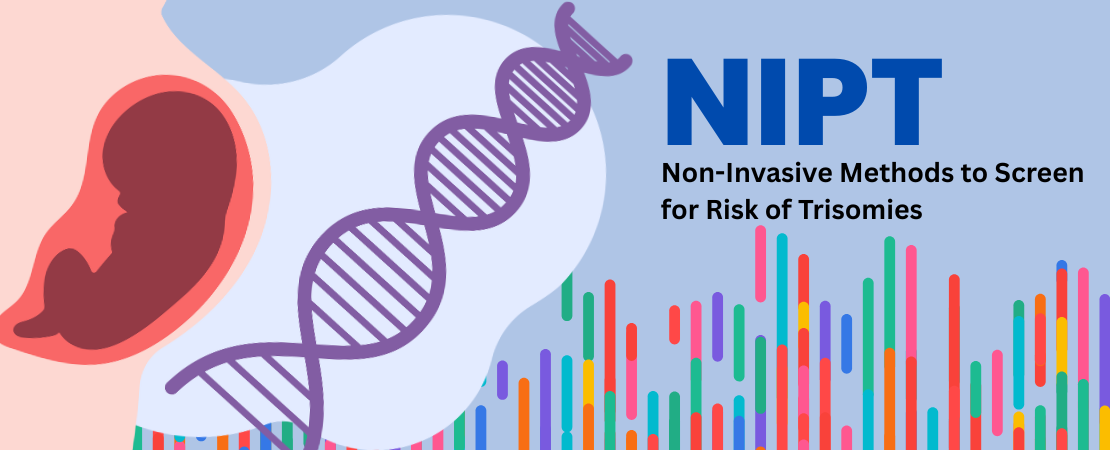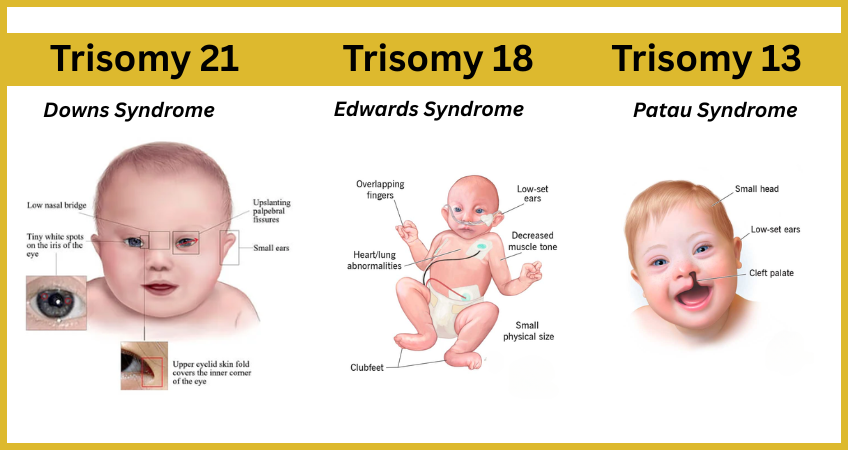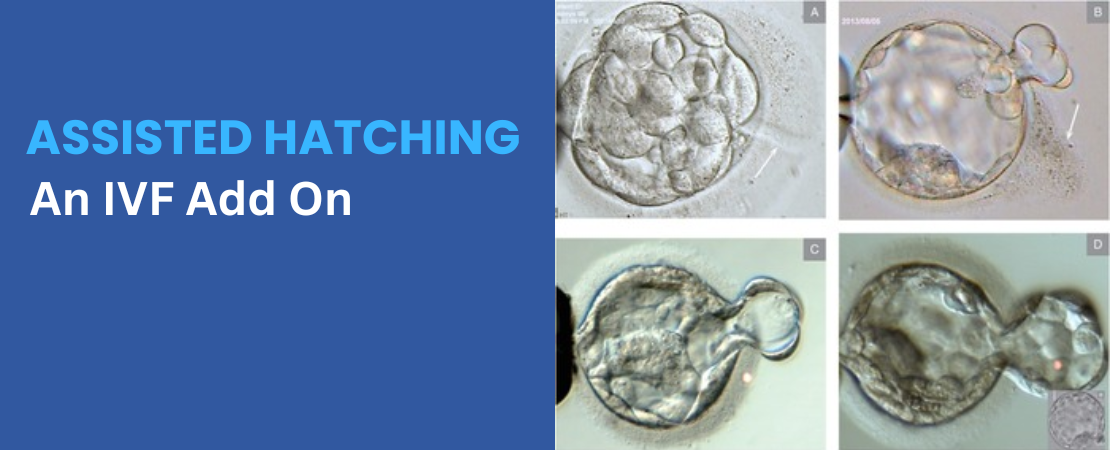
What is Non-Invasive Prenatal Testing (NIPT) ?
NIPT) or cell-free DNA (cfDNA) screening is a highly accurate screening test used to detect genetic abnormalities in a fetus. It analyzes small fragments of fetal DNA (cell-free DNA) circulating in the mother’s blood. This test helps assess the risk of chromosomal conditions like Down syndrome (Trisomy 21), Edwards syndrome (Trisomy 18), and Patau syndrome (Trisomy 13) without the need for invasive procedures like amniocentesis or chorionic villus sampling (CVS). Non-Invasive Prenatal Testing (NIPT) method offers a less invasive and safer approach to detecting fetal chromosomal abnormalities and genetic disorders during pregnancy.
NIPT helps by providing accurate information about the health of the fetus without the risks associated with invasive prenatal testing methods such as amniocentesis and chorionic villus sampling (CVS). Because These traditional methods have a small risk of miscarriage and can cause discomfort to the mother. NIPT can provide this information in a non-invasive and safe way.
NIPT is particularly recommended for women who are at high risk of having a child with a chromosomal abnormality or genetic disorder, such as those who are over 35 years of age, have a family history of genetic disorders, or have had abnormal ultrasound results.
Why is NIPT Important?
- Early detection: Can be performed as early as 10 weeks of pregnancy.
- Safe and non-invasive: Requires only a simple blood draw from the mother.
- High accuracy: Over 99% accuracy for detecting common trisomies.
- Reduces need for invasive tests: Helps avoid amniocentesis or CVS, which carry a small risk of miscarriage.
How do Non-Invasive Prenatal Testing (NIPT) tests work?
This test analyzes the fetal DNA present in the mother’s blood and can detect common chromosomal abnormalities. These tests are usually conducted during the first or second trimester of pregnancy. These results of these tests often require certain fetal parameters that can be determined by an Ultrasound. So these tests are often done along with Ultrasound scans at a specified week of pregnancy. Two of the most commonly recommended screening tests are:
- The first trimester screening done or double marker test between 11-13 weeks
- Quadruple marker test between 15-18 weeks of pregnancy
What Conditions Can NIPT Screen For?
NIPT primarily screens for:
- Trisomy 21 (Down syndrome) – Causes developmental delays and intellectual disabilities.
- Trisomy 18 (Edwards syndrome) – Associated with severe developmental delays and low survival rates.
- Trisomy 13 (Patau syndrome) – A severe condition with multiple birth defects and low survival rates.
- Sex chromosome abnormalities – Can detect Turner syndrome (45,X), Klinefelter syndrome (XXY), Triple X syndrome (XXX), and XYY syndrome.

Expanded NIPT Options
Some labs offer extended screening for conditions like:
- Microdeletion syndromes (e.g., DiGeorge syndrome, Cri-du-chat syndrome)
- Rare autosomal aneuploidies
Who Should Consider Non-Invasive Prenatal Testing (NIPT)?
- While NIPT is available for all pregnant women, it is especially recommended for:
- Women over 35 years old (higher risk of chromosomal abnormalities)
- Pregnant women with abnormal ultrasound findings
- Those with a family history of genetic disorders
- Women who had a previous pregnancy with chromosomal abnormalities
- Those who received abnormal results from first-trimester or second-trimester screening tests
How is Non-Invasive Prenatal Testing (NIPT) Done?
- Blood Sample Collection – A simple blood draw from the mother’s arm.
- Lab Analysis – The fetal DNA is extracted and analyzed.
- Results Interpretation – A report is sent to the doctor within 7–10 days.
Understanding NIPT Results
- Low Risk – The baby is unlikely to have the screened chromosomal conditions.
- High Risk – Further diagnostic testing (CVS or amniocentesis) is recommended to confirm the result.
NIPT is a screening test, not a diagnostic test – it can only estimate risk, not confirm a diagnosis.
Advantages & Limitations of NIPT:
Advantages of NIPT
- Highly accurate – Over 99% sensitivity for trisomy 21 (Down syndrome). NIPT has a high detection rate for trisomy 13 (Patau Syndrome) and trisomy 18 (Edwards Syndrome) with detection rates often exceeding 97%, though slightly lower than for trisomy 21.
- No risk of miscarriage – Unlike invasive tests.
- Earlier results – Can be done as early as 10 weeks.
- Simple and convenient – Just a maternal blood test.
Limitations of NIPT
- Not 100% conclusive – A high-risk result requires confirmatory testing.
- Limited scope – Does not detect all genetic disorders.
- Possibility of false positives/negatives – Though rare, errors can occur.
- May not work in all pregnancies – Certain conditions like maternal obesity, low fetal fraction, or twin pregnancies may affect results.
What should be the course of action if a NIPT test result indicates risk?
A high-risk result does NOT mean the baby definitely has a condition. Your doctor will recommend Prenatal Genetic Diagnosis testing like CVS or amniocentesis to confirm the diagnosis.
If a NIPT test result indicates a potential risk of chromosomal abnormalities or genetic disorders, it is important to follow up with diagnostic testing, such as amniocentesis or CVS, This will provide more detailed information about the health of the fetus and help expectant parents make informed decisions about their pregnancy.
Counseling with a genetic counselor or healthcare provider can also be helpful in understanding the results and making decisions about the next steps.
Conclusion:
NIPT is a safe, early, and highly accurate way to screen for common genetic conditions. While it cannot diagnose chromosomal abnormalities, it helps expectant parents make informed decisions about further testing and pregnancy management. Always discuss your options with a doctor or genetic counselor to determine the best approach for your pregnancy.
Would you like help finding NIPT testing centers near you? Get in touch with us today!
References:
- American Pregnancy Association. Quad Screen Test (https://americanpregnancy.org/prenatal-testing/quad-screen-742). Accessed 6/12/2023.
- Centers for Disease Control and Prevention. Diagnosis of Birth Defects (https://www.cdc.gov/ncbddd/birthdefects/diagnosis.html). Accessed 6/12/2023.
- FASTER Trial Research Consortium; Dugoff L, Hobbins JC, Malone FD, Vidaver J, Sullivan L, Canick JA, et al. Quad screen as a predictor of adverse pregnancy outcome (https://pubmed.ncbi.nlm.nih.gov/16055573/). Obstet Gynecol. 2005 Aug;106(2):260-7. Accessed 6/12/2023.
- March of Dimes. Prenatal Tests (https://www.marchofdimes.org/pregnancy/prenatal-tests.aspx). Accessed 6/12/2023.
- Prenatal Information Research Consortium. ACOG/SMFM Issue New Guidelines for Prenatal Genetic Screening (https://prenatalinformation.org/2020/08/25/acog-smfm-issue-new-guidelines). Accessed 6/12/2023.
- The American College of Obstetricians and Gynecologists. Prenatal Genetic Screening Tests (https://www.acog.org/patient-resources/faqs/pregnancy/prenatal-genetic-screening-tests). Accessed 6/12/2023.
- https://my.clevelandclinic.org/health/diagnostics/21050-nipt-test

